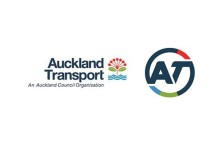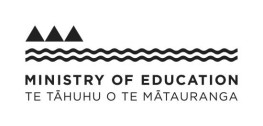Posted on: 8 - 8 - 2023
Terminology Explained
Energylight's product suite are designed for various applications whilst meeting certain approvals. Below is an explanation of the term you may see showcased on our luminaires.

What is AT?
AT is an abbreviation for Auckland Transport. Where AT is shown on our products means that the products are AT-approved for use.
AT is responsible for all the region's transport services, from roads and footpaths to cycling, parking, and public transport.
Auckland Transport requires products to be approved against assessment criteria to be used in their projects. These products are separated and tested under two categories:
-
Amenity Lighting (in-grounds, handrail, projectors etc)
-
Roadway Lighting (street lighting)
The assessments are conducted by an independent AT-approved lighting engineer and a wider review group.
What is Waka Kotahi/NZTA M30?
Where M30 is shown on our products means that the products are Waka Kotahi/NZTA approved for use on their network.
Waka Kotahi/NZTA is responsible for all the Crown transport infrastructure from roads to shared paths for Cycling and pedestals and Bridges.
Waka Kotahi/NZTA requires products to be approved against selection criteria to be used in their projects.
The assessments are conducted by an independent Waka Kotahi/NZTA approved lighting engineer and a wider review group
![]()
What is Green Star?
Created by Green Building Council Australia in 2003, and adapted for Aotearoa New Zealand, Green Star provides a rating of up to six stars based on a building’s key sustainability credentials. One star indicates minimum practice with 6 stars achieving world leadership.
Green Star is an internationally recognised certification available for every commercial building type, from schools and hospitals to office buildings, shopping centres, and industrial warehouses. It can even be used for large-scale community developments.
Certification works toward:
- Reducing the impact of climate change
- Enhancing our health and quality of life
- Restoring and protecting our planet's biodiversity and ecosystems
- Driving resiliency in buildings, fit-outs and communities
- Contributing to market transformation and a sustainable economy
Green Star is composed of four distinct sustainability rating tools, each relevant to distinct phases of the built environment.; Communities, Design & As Built, Interiors and Performance.
Green Star, Design & As Built, is a rating tool developed to rate the design and construction of any building. Of particular importance in lighting are credits 11 and 26.
Credit 11, Lighting Comfort, aims to encourage well-lit spaces that provide a high degree of comfort to users.
Qualifying for Credit 11.1, Minimum Lighting Comfort is a minimum requirement.
Three additional points are available for:
- 2 General Illuminance and Glare Reduction
- 3 Surface illuminance
- 4 Localised Control
Credit 26, Light Pollution, aims to reward projects that minimise light pollution.
Qualifying for Credit 26.1, Light Pollution to Neighbouring Bodies is a minimum requirement.
One additional point is available for:
- 2 Light Pollution to Night Sky
Green Star’s mission is to “create sustainable places for everyone”.
Find out more about Green Star here: https://www.nzgbc.org.nz/greenstar

What is WELL Building Standard?
The WELL Building Standard is an international assessment method that encourages healthy eating choices and active lifestyles, as well as promoting natural light and a high standard of air quality, based on seven years' of scientific, medical and architectural research.
Organisations everywhere – from startups to Fortune 500s – use WELL to prioritise the health and safety of their people, maximise real estate value and optimise the human and social capital performance of their business.
Find out more about WELLS here: https://www.wellcertified.com/ratings

What is MoE?
MoE stands for the Ministry of Education. Where this is shown on the Energylight website will be in relation to products that are designed for the education industry such as primary schools, tertiary education facilities, or high schools. More here: https://www.education.govt.nz/
What is DQLS (Designing Quality Learning Spaces)?
DQLS provides mandatory requirements for MOE builds. It covers requirements for main internal environmental quality factors: acoustics, lighting and visual comfort, indoor air quality and thermal comfort.
Relevant to Energylight, is the lighting and visual comfort section which covers both natural and artificial light.
Also relevant to Energylight is https://assets.education.govt.nz/public/Documents/Primary-Secondary/Property/Design/Flexible-learning-spaces/Lighting-and-Visual-Comfort-V2.1-2020-13-july-2023.pdf
An overview of DQLS can be found here: https://assets.education.govt.nz/public/Documents/Primary-Secondary/Property/Design/Flexible-learning-spaces/DQLS-lighting-overview-12-jul-2023.pdf
What is TM65?
TM65 is a Technical Memorandum developed by the Chartered Institute of Building Services Engineers (CIBSE) To provide guidance and a calculation methodology for the assessment of embodied carbon in products used in buildings. The purpose of the guide is to help the industry take a first step to evaluate embodied carbon emissions in building services design, alongside operational carbon emissions. CIBSE is the professional body that exists to advance and promote the art, science and practice of building services engineering, to invest in education and research, and to support our community of built environment professionals in their pursuit of excellence.
Energylight and Energyline have used the TM65 methodology to assess the embodied carbon of our New Zealand-made products and by doing so we challenge the industry to value the carbon embodied and improve upon this benchmark.
Find out more: https://www.energyline.net/tm65
What is COI?
COI Stands for Cyanosis Observation Index. It is a unit of measure that has been used in Australia and New Zealand since 1997 (with the most current of lighting standard AS/NZS 1680.2.5:2018) and defines the suitability of a light source in healthcare environments.
In particular, the index value describes a light source’s suitability for visual detection of cyanosis in a patient. The test evaluates the colour appearance of fully oxygenated blood and oxygen-depleted blood under both a reference light source and then the light source under test. Interior Lighting Standard AS/ NZS 1680.2.5:1997 covers ‘Hospital and medical tasks’, and it introduces the concept of lighting to support the observation of cyanosis. It also establishes the Cyanosis Observation Index (COI) as a measure of the ability of a light source to aid the detection of cyanosis in a patient.
Full requirements are outlined in Section 7.2 of that standard, which includes: “Where it is decided” that cyanosis observation is necessary, the lighting should have a colour temperature of between 3300K and 5300K and a COI of 3.3 or less.
